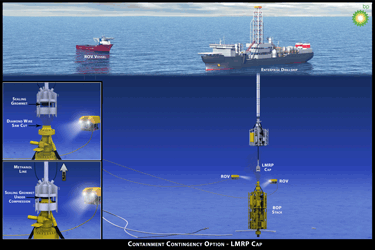You might have come across this ‘Fucking Booming’ by FishGrease, but in case you haven’t, here’s a snippet and a few pictures to give you the idea:
Generally, boom is long and bright bright orange or yellow. It is not bright bright orange or yellow so you can see it, dear fledgling boomer, but so Governors, Senators, Presidents and The Media can see it. It has a round floaty part that floats, and a flat “skirt” that sinks. A RULE: the floaty part never floats high enough and the skirt never rides low enough. Some oil will ALWAYS go over the boom and some will ALWAYS go under it. Our task is to MINIMIZE both! We do that by fucking proper fucking booming. Here. This picture teaches you almost 100% of what you’ll learn in DKos Booming School, about fucking proper fucking booming:
I lost my one copy of Photoshop, had to learn Gimp, and so the quality is sorta piece-of-shit-c*nt, but you get the idea. It’s fucking obvious. Boom is not meant to contain or catch oil. Boom is meant to divert oil. Boom must always be at an angle to the prevailing wind-wave action or surface current. Boom, at this angle, must always be layered in a fucking overlapped sort-of way with another string of boom. Boom must always divert oil to a catch basin or other container, from where it can be REMOVED FROM THE FUCKING AREA. Looks kinda involved, doesn’t it? It is. But if fucking proper fucking booming is done properly, you can remove most, by far most of the oil from a shoreline and you can do it day after day, week after week, month after month. You can prevent most, by far most of the shoreline from ever being touched by more than a few transient molecules of oil. Done fucking properly, a week after the oil stops coming ashore, no one, man nor beast, can ever tell there has been oil anywhere near that shoreline.
(more…)



